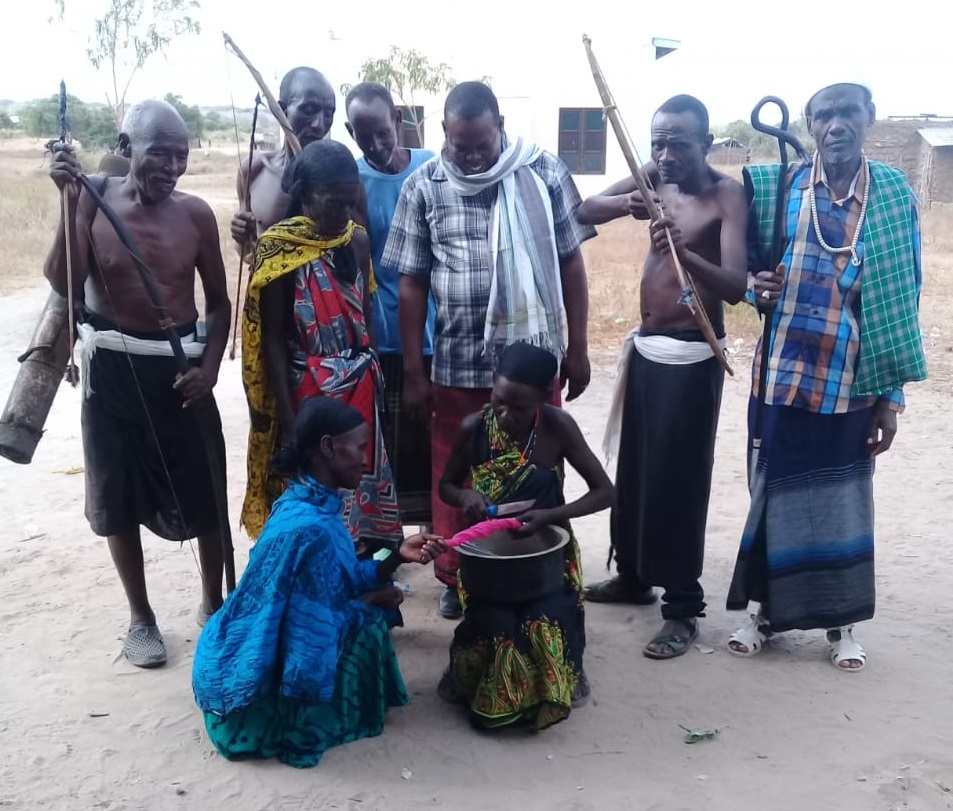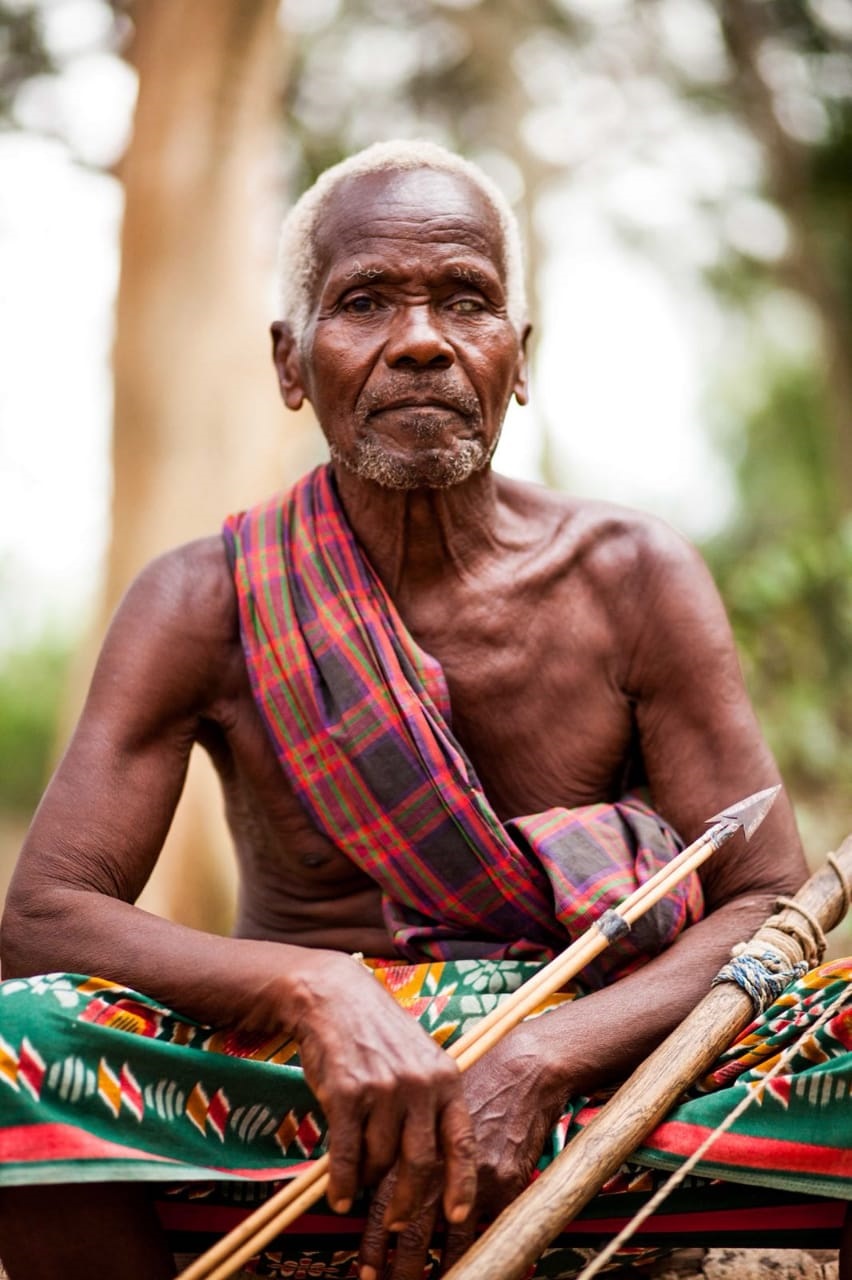
Kenya’s indigenous and minority communities are petitioning the government to recognize them independently as indigenous people ahead of the forthcoming national population and housing census slated for August of this year.
The move could see some of the country’s indigenous people who are yet to be recognized as independent tribes added to the list of 43 Kenyan tribes.
However, whether or not their demand will be met by the government remains uncertain given the nature of Kenyan politics which is often characterized by tensions and rivalry between the larger ethnic groups.
The Kenyan political, social and economic landscape has been shaped by ethnicity since independence, and its national politics and census have been occasionally marred by political interference and manipulation with political leaders keen to alter results in favor of their ethnic tribes.
For decades, indigenous and minority communities in the country have been fighting for recognition, security of land tenure, and inclusion in the decision-making processes. But by virtue of their numerical weakness they find themselves further marginalized.
A majority of the country’s indigenous and minority communities are clustered together with other major ethnic tribes, depriving them of their identity and recognition.
The situation has undoubtedly put them in a precarious situation when it comes to advocating for their rights as they lack the numbers to marshal support in any of the country’s political and judicial institutions.
Political interference in previous censuses saw indigenous communities clustered together with other major ethnic communities, thus violating their right to inclusion and access to equitable resources.
However, a head of the forthcoming national population and housing census, indigenous communities across the country have renewed their push to have the government count them as independent tribes.
The communities hope that by recognizing them as tribes, they will gain the ethnic strength which plays a vital role when it comes to resources allocation, political representation, and most importantly, infrastructural development such as social amenities.
But while the national population and housing census is a crucial exercise meant to help the government make informed decision on budget allocation, indigenous and minority communities across the country are expressing fears that failure to document them independently could further exacerbate marginalization and subject them to poverty.

“We are calling on the government to recognize us as a tribe and classify us as one of the country’s ethnic tribes,” says Jilo Noto, spokesperson for the Waata indigenous people, a hunter-gatherer community that inhabits Kenya’s coastal area of Kilifi.
“All we are asking for is recognition by the government. We don’t want to be merged with other communities and yet we possess a distinct cultural identity, traditions, and customs,” Noto told Toward Freedom.
The community fears a repeat of the previous census which failed to document the population of indigenous people, and could lead to further marginalization and increased violation of their rights.
“As a result of being lumped up with other tribes we don’t have any political representation in both the county and national assembly,” said Noto, adding that this has not only denied them the right for recognition and identity, but also deprived them the right for political representation.
In the last census conducted in 2009, indigenous and minority communities were clustered together with other major ethnic tribes making it difficult to know their exact population.
In Kenya, indigenous and minority communities are mainly pastoralists and hunter-gatherers, with some fishing communities, as well as small farming communities.
According to the 2009 census results, pastoralists are estimated to comprise 25 percent of the national population of 38.8 million, while the largest individual community of hunter-gatherers is estimated to be around 79,000.
Hunter-gatherers include the Endorois, Ogiek, Sengwer, Yiaku, Waata and Awer, while the pastoralists include the Turkana, Rendile, Borana, Maasai, Samburu, IIchamus, Somali, Gabra and Pokot.
The Waata concerns are widely shared across the country by other indigenous people.
Jeniffer Koinante, a member of the Yiaku indigenous people, a hunter-gatherer community whose language has been classified by UNESCO to be in the verge of extinction, said recognizing indigenous people as independent tribes would help them access national resources.
“We are tired of being clustered with other majority tribes which deprives us the right for equity when it comes to national resource allocation,” said Koinante, adding that they are conducting awareness campaigns to ensure they are recognized as Yiaku indigenous people.
According to the last census, the Yiaku indigenous community was classified as Maasai, while the Sanya community, the smallest indigenous people of the coastal town of Malindi who are believed to be less than 600, were classified as Giriama from the wider Mijikenda community, while the Ogieks and Endorois indigenous people were classified as Kalenjins.
The clustering, according to indigenous people across the country, has deprived them of services such as hospitals, schools and access to clean water and sanitation since the construction of such facilities are always centered in the most populous centers, often inhabited by major ethnic communities.
While the country has made some progressive legislation over the years to protect the rights of these communities, both pastoralist and hunter-gatherers rights to land tenure and political representation continue to be violated.
According to a 2018 report by the International Work Group on Indigenous Affairs (IWGIA), that reviews the state of indigenous peoples globally, Kenyan indigenous peoples rights continue to be violated despite the enactment of several pieces of legislation meant to protect them.
“The enactment of the Community Land Act 2016, which has glaring gaps and fundamental perils, fails to provide a clear provision for demarcation of community land and its resources including maps and boundaries in order to protect community land from encroachment,” says the report.
Though the country has no specific legislation on indigenous peoples and is yet to adopt the United Nations Declaration on the Rights of Indigenous Peoples (UNDRIP), the report says the state of indigenous peoples is in a deplorable situation.
The report notes that cases of forced evictions against indigenous communities are widespread across the country. In 2017, the government forcefully evicted Sengwer indigenous people from the Embobut Forest to pave way for the construction of a water tower which was being funded by the European Union.
Like other East African nations, Kenyan indigenous peoples are losing their land to both private and government infrastructural projects which are constructed in their ancestral land.
“The territories of these people constitute the only remaining space destined for extraction of mineral resources such as gas, oil wind and geothermal energy, as well as massive infrastructure projects such as roads, pipelines and railways,” says the report, which cited the violation of land tenure of Samburu, Turkana, and Rendile indigenous peoples, whose land was acquired by the government to pave way for the construction of the privately owned Lake Turkana wind power project.
Other several reports on the state of indigenous and minority communities in the country have cited increased violations of indigenous people’s rights.
“Minority and indigenous peoples tribulations are partly compounded by the state’s deliberate attempts to divide minorities between different administrative sections which has weakened their numerical strength,” says a report on Kenyan minorities and indigenous peoples by Minority Rights Group International.
For instance, the report points out that the Ogiek indigenous people are spread over five constituencies, which makes it difficult for them to win any electoral position, while the Endorois are similarly divided into two local authorities, where despite having positions in county assembly, they are unable to influence political decision because they are too few.
Shadrack Kavilu is a freelance journalist based in Nairobi, Kenya. He has a deep passion for environment and land rights issues. He has published widely in Kenya and international media outlets.
